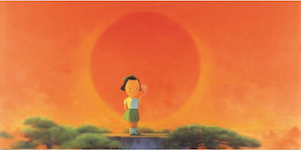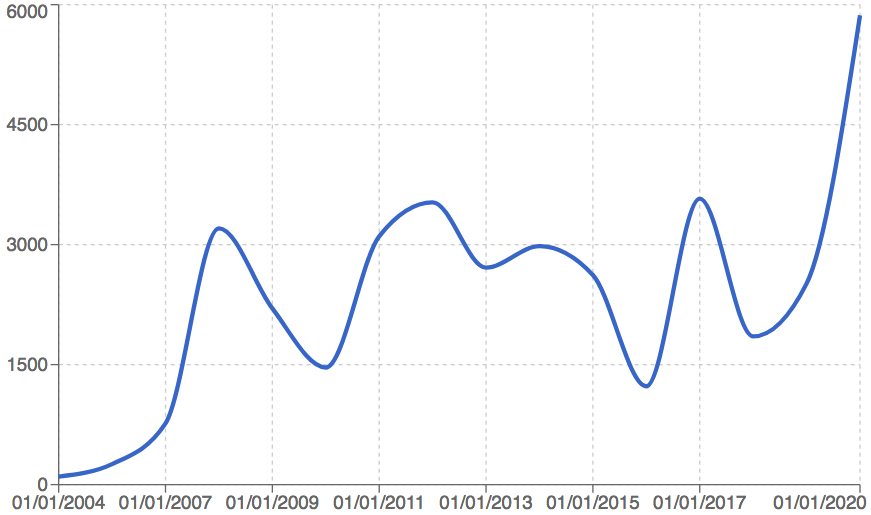Focus on Liu Ye
[26.05.2020]From children’s literature to historical figures, from the Dutch Modernists to well-known literary characters, few Chinese artists have referenced as much Western culture as LIU Ye. From baby-faced children to comic book heroes, his art reworks internationally recognised icons of contemporary culture. Born two years before the start of the Cultural Revolution, he grew up in a society entirely governed by the State. Despite the ban on Western literature, Liu was exposed to it via a discretely hidden collection of books belonging to his father, who was also an author of children’s books. He consolidated his knowledge of Western culture during his studies in Europe: after finishing his art studies in Beijing, he spent four years at the Universität der Künste in Berlin (1990-94) and eight years later (1998) he took up a residency at the Rijksakademie in Amsterdam. Both periods in Europe appear to have had an immediate impact on his work.
Few of Liu Ye’s early works have reached the secondary market, but a large format from his Berlin years fetched more than a million dollars at Poly Beijing in 2008. The work clearly reflects his familiarity with the art conserved in the museums of the German capital 1992/1993) Der ausflug(outing).
Certain recurring motifs in his paintings are more common in Europe than in China: the painter Piet Mondrian is frequently referenced, and the little Miffy (or Nijntje in its original language), a rabbit created by Dirck Bruna (as familiar to Dutch children as ‘Babar’ is to French children) became omnipresent in his work. In the 2000s, Liu Ye multiplied this type of reference, with portraits of famous characters from the history of the arts such as Shakespeare, Mozart and Pinocchio.
His career subsequently took off and he received substantial international exposure. But it would be wrong to attribute this success to the simple recognition of familiar icons in his work. In fact, although Liu Ye is collected in Europe and America, his principal buyers are from China and Hong Kong. On closer inspection, the childish innocence of his paintings contains a very subtle dissonance. Round little schoolboy characters are central to his work, but their expressions and the deliberately empty environments in which they are placed are often stripped of any childish lightness… Indeed, this contrast provides the key drama of his work, which viewers usually perceive as slightly disturbing: in Lost balance (1995) for example, three boys in sailor suits, static like tin soldiers, are depicted in aesthetic contemplation of a book on Mondrian, a rainbow and a still–life through sunglasses or binoculars (perhaps blinkers) and totally oblivious of the tragedy of a sinking warship in the background. “I liked fairy tales as a child because they allowed me to escape, and there were times when I needed to. I may use certain references to things that influenced me as a child, things that first attracted me to art. But these subjects, my ‘little people,’ are used to describe my world today and certainly far removed from childhood” (interview, Jon Burris, 2014, China Today).
 Liu Ye. Smoke (2001/02), sold for $6.65 million
Liu Ye. Smoke (2001/02), sold for $6.65 million
Liu Ye is not an adult stuck in childhood repeatedly portraying his childhood heroes. Far from the ‘Peter Pan syndrome’, he builds his images by essentializing the content, another mark of Mondrian’s influence on his work. His works are never ‘just’ references; he experiments with colours, using a wide range of different palettes, tones and filters; sometimes in blues, sometimes in pinks, as in Boogie Woogie, Little Girl in New York (2006) which sold at Sotheby’s Hong Kong for $2.9 million a year ago.
In an interview with the Jing Daily in 2015, Liu confided that his inspiration had shifted from his childhood memories and his imagination to everyday objects. This is evident in his paintings of books in a photographic style. The attention to detail – like photos of open volumes or empty pages, depicting with almost manic precision the covers of art books or erotic novels – seems to express the artist’s love for the container… the book as object, but also as content: literature. One of his most recent works, the small Book Painting No. 6 (2014–15) depicting a book with a red cover recently sold via the David Zwirner Gallery for almost $500,000 in the initial hours of the Art Basel Hong Kong online fair, in the midst of the Covid-19 turmoil.
 Liu Ye. Price index (copyright Artprice.com)
Liu Ye. Price index (copyright Artprice.com)
Fueled by regular solo shows, Liu Ye’s market is very active and he has a firm footing in both the Asian and European visual arts landscapes. In 2018, his work was shown in an exhibition entitled Storytelling, a retrospective at Prada Rong Zhai in Shanghai which retraced his career since 1992. Before that, there was a special focus in the Dutch town of Amersfoort, Mondrian and Liu Ye (2016), and in 2017 his work was present in the section Viva Arte Viva at the 57th Venice Biennale.
Liu Ye signed a new auction record with the work Smoke (2001/02), which fetched $6.65 million at Sotheby’s Hong Kong last October. In fact, 2019 was a superb year for him with no less than 16 results above the million-dollar threshold! The fact that he joined the David Zwirner stable in March last year certainly contributed to the success. Although Liu Ye’s works sell particularly well in Asia, relatively few collectors in the US have shown interest in his work, a differential that the DZ gallery intends to reduce. Liu Ye is the first Chinese artist to join the international gallery which is planning a solo show of his work in 2020 (in one form or another!) David Zwirner is of course a pioneer in the online promotion of artists and their works. He launched his first online Viewing Room in 2017. Fifty-four Viewing Rooms later, the dealer is in a strong position viv-à-vis online communication and of course vis-à-vis the Covid-19 pandemic which has made direct visual contact with artworks almost impossible. So… look out for the expansion of Liu Ye’s market across the Atlantic; there is little doubt that this recent association with Zwirner will permanently modify the speculative side of his market.




 0
0
